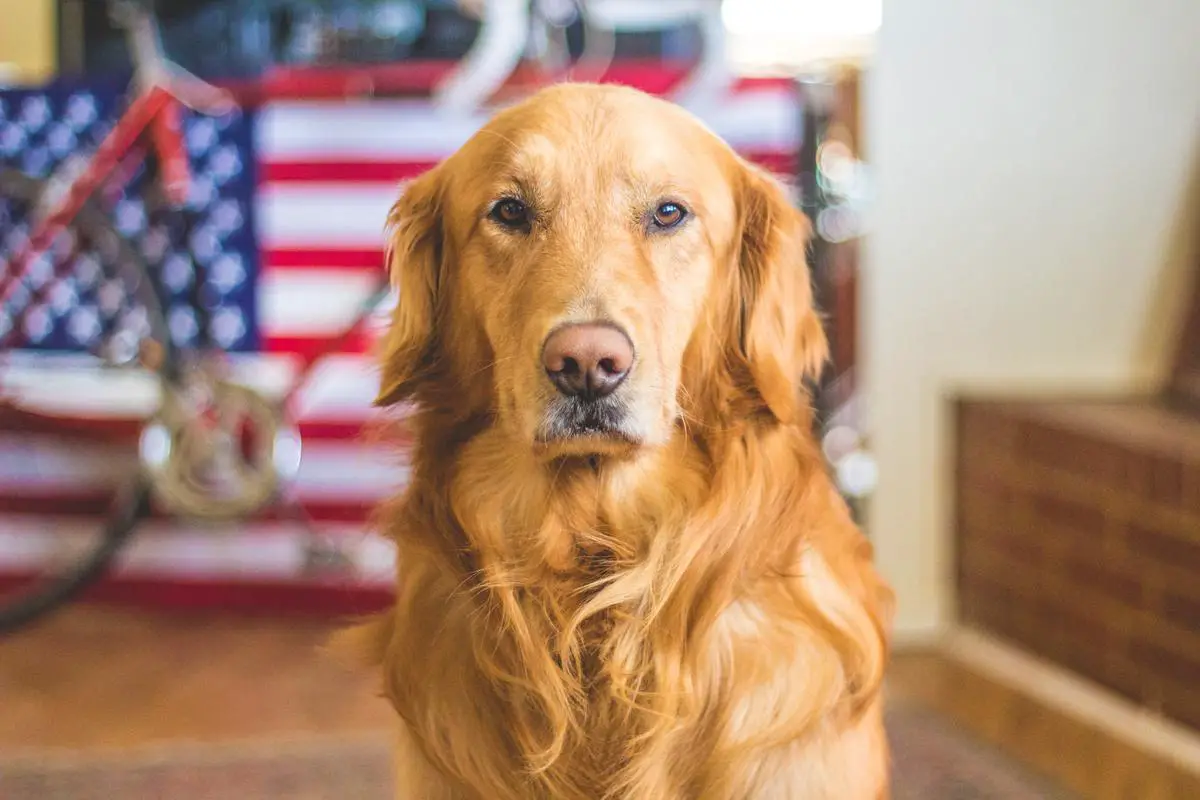Double Doodle vs Labradoodle: Unraveling the Differences
As an aspiring pet parent, understanding the breed you’re bringing into your life is crucial. An excellent way to commence your journey is delving into the distinctive features, habits, and requirements of the breed. Today we embark on a comprehensive exploration of two charming crossbreeds that have stolen hearts worldwide – The Labradoodle and the Double Doodle. A primordial comprehension of their origins, temperament, health predispositions, and grooming necessities will go a long way in establishing a happy and healthy relationship with your pet. This read aims to share insights into these breeds to assist you in choosing the companion best suited to your lifestyle.
Understanding Labradoodles
Understanding Labradoodles
Labradoodles are a popular crossbreed dog loved for their hypoallergenic coats and friendly nature. The breed was born out of a desire to create a dog with the intelligence and trainability of a Labrador Retriever and the allergy-friendly coats of a Poodle.
History of Labradoodles
The Labradoodle breed originated in Australia in the 1980s. They were initially bred for use as guide dogs for individuals with allergies and were a carefully crafted cross between the Labrador Retriever and the Standard Poodle. Since their foundation, Labradoodles have gained popularity globally due to their unique blend of intelligence, friendliness, and hypoallergenic coats.
Labradoodle Characteristics
The Labradoodle’s physical features can vary widely, as this breed’s genetics are a blend of two different breeds. However, they typically have long ears that hang down towards their cheeks, expressive eyes, and sturdy bodies. They have a curly or wavy, hypoallergenic coat that can come in various colors including cream, gold, and chocolate.
Temperament
Labradoodles are known to be friendly, intelligent, and easy to train. They are typically good-natured and get along well with other dogs and pets. Labradoodles are also known for their sociable behavior, often doing well with children and enjoying being part of a family environment. Their high energy levels require lots of exercise, so they’re often better suited for homes with yards or owners who can provide regular walks.
Health and Special Needs
Labradoodles generally have a lifespan of 12-14 years and are relatively healthy dogs. However, like any breed, they are prone to specific health conditions. These can include hip dysplasia, eye diseases, and certain skin conditions. It’s essential for owners to be proactive in their Labradoodle’s health, providing regular vet check-ups and adhering to any specific care needs they may have.
Double Doodle vs Labradoodle
Double Doodles are another popular crossbreed option for dog lovers. They are a mix of Labradoodles and Goldendoodles. This breed generally shares many characteristic traits with the Labradoodle – they’re amicable, intelligent, and hypoallergenic. The Double Doodle’s coat can be more variable, sometimes resembling the curly Poodle coat, the shaggy Goldendoodle coat, or the more Labrador-like Labradoodle coat.
One of the most significant differences between Labradoodles and Double Doodles is the genetic diversity with Double Doodles having genes from three different breeds – Labrador Retrievers, Poodles, and Golden Retrievers. This diversity can provide a broader range of characteristics and may lead to better overall health due to the larger gene pool.
Final Thoughts
When considering Labradoodles and Double Doodles, it’s apparent that both are intelligent and playful crossbreeds with hypoallergenic qualities. The optimal choice ultimately lies in your personal needs and preferences as each breed has its own distinct set of traits, some of which may resonate more with your requirements, making either the ideal addition to your family.

Exploring Double Doodles
Exploring Double Doodles
Delving into Double Doodles, this breed is an interesting mix that originates from two hybrid breeds: the Goldendoodle and the Labradoodle. Each of these parent breeds are themselves a hybrid, born out of a cross between a Labrador Retriever and a Poodle (in the case of the Labradoodle), and a Golden Retriever and a Poodle (in the case of the Goldendoodle).
Double Doodles: Key Features
Physically, Double Doodles typically have a medium to large build, similar to both Labradoodles and Goldendoodles. Given their Poodle lineage, they possess a curly or shaggy coat that may exhibit a multitude of colors, including cream, gold, brown, black, or a multicolored mix.
Double Doodles often inherit the Poodle’s hypoallergenic qualities; which means they produce fewer allergens compared to other breeds, and they also shed less. These features make Double Doodles a better fit for families with allergies, setting them apart from Labradoodles that don’t have the hypoallergenic characteristic as consistently.
The Personality of a Double Doodle
In terms of personality, Double Doodles are generally known for being exceptionally friendly, intelligent, and sociable. Being eager to please and quick learners, they excel in training and have the potential to do well in obedience, agility, and even therapeutic work.
Comparatively, Labradoodles also possess a friendly demeanor and quick-to-learn nature, but Double Doodles’ resulting from two hybrid breeds possibly intensifies these desired characteristics.
Health Considerations for Double Doodles
One key aspect to consider in the Double Doodle vs. Labradoodle comparison includes health concerns. Due to their mixed lineage, Double Doodles may be prone to health conditions common in Poodles, Golden Retrievers, and Labrador Retrievers. These potential ailments could include hip dysplasia, certain heart conditions, or eye problems.
Having a wider gene pool stemming from two hybrid parent breeds, Double Doodles may have a larger range of potential health concerns compared to Labradoodles. Regular veterinary checkups and an active lifestyle can help manage these risks and maintain the dog’s overall health.
Caring for a Double Doodle
When it comes to the specific needs of Double Doodles, they require significant amounts of both physical and mental stimulation due to their energetic and intelligent nature. They also require regular grooming to maintain their curly or wavy coats.
Like the Labradoodle, Double Doodles thrive in active, loving environments where they can exercise both their bodies and minds. However, Double Doodles might require a bit more stimulation due to their double-dose of Retriever genes, known to be one of the most energetic dog breed groups.
Double Doodles and Labradoodles share many similarities. However, unique traits emerge from Double Doodles due to the mixing of their Goldendoodle and Labradoodle parentage. These distinctive traits encompass appearance, hypoallergenic properties, potential health concerns, and care needs. With the right care and attention, Double Doodles can make a wonderful, joyful addition to any family, just like Labradoodles.

Comparison between Double Doodles and Labradoodles
Understanding Double Doodles Vs Labradoodles
Both Double Doodles and Labradoodles are adored designer breeds, each featuring a blend of genes from Labrador Retrievers, Poodles, and Golden Retrievers. However, what sets them apart is that Double Doodles originate from a Labradoodle and a Goldendoodle mix, while Labradoodles are cultivated from the breeding of purebred Labrador Retrievers and Poodles. This fundamental distinction helps shape their respective characteristics.
Physical Characteristics
In terms of size, both breeds are generally similar, falling into the medium to large category. Weight can range from 30-100 pounds and height can be anywhere from 14-24 inches. Both breeds have an athletic, sturdy build suitable for various kinds of activities.
Coat texture and color may vary within both breeds due to the mix of genes. Typically, Labradoodles have curly or wavy coats that might be chocolate, cream, caramel, black, silver, or blue. Double Doodles, on the other hand, tend to be characterized by their curly or wavy coats in hues of gold, cream, red, chocolate, black, and sometimes even multicolored.
Temperament Characteristics
Double Doodles are known for their friendly, easygoing nature, and intelligence. Labradoodles share similar traits, often described as sociable, playful, and smart. Both breeds are known to get along well with children and other pets, hence making good family pets.
Their trainability is also quite alike, making them suitable for first-time dog owners. The key difference would be that Labradoodles might need a bit more patience while training due to their high energy levels.
Health Implications
Both breeds do have some potential health conditions associated with them, common to large dogs and their parent breeds. Double Doodles may be susceptible to conditions such as hip dysplasia, congenital heart disease, and Von Willebrand’s disease. Labradoodles might face health afflictions including hip dysplasia, eye disorders, and Addison’s disease.
Routine veterinary check-ups and a healthy diet can significantly assist in inhibiting these health conditions. It’s also essential to check the health clearances of the puppy’s parents before bringing them home.
Grooming and Care
Both Double Doodles and Labradoodles need regular grooming due to their Poodle genes. Their curly or wavy coats require frequent brushing to prevent matting and tangling.
Unlike many dog breeds, these dogs have a reduced shedding rate, making them an appropriate choice for people with allergies.
In terms of activity, both breeds are highly energetic and require daily exercise to keep them happy and healthy. This can consist of walks, runs, swims, or playtime in a secure yard. Mental stimulation in the form of training or puzzle toys is also necessary for these intelligent breeds.
In terms of feeding, both Double Doodles and Labradoodles need a balanced diet that suits their age, size, and activity level. Portion control is key to prevent obesity which is common in both breeds.
An Introduction to Double Doodles and Labradoodles
At the heart of Double Doodles and Labradoodles lies their common parent breed, the Poodle, which bestows upon them several admirable traits. These vivacious dogs display exceptional intelligence, infectious energy, and a remarkable suitability for families. The breeds are similar in terms of care and grooming requirements; however, they exhibit differences in their respective origins, distinct physical characteristics, and potential health concerns.

Photo by calebjamesfisher on Unsplash
Decision Making: Choosing the right breed for you
Decoding the Double Doodle and Labradoodle: A Battle of Affable Companions
The Double Doodle and the Labradoodle, two dog breeds admired for their amiable nature, high intelligence quotient, and largely hypoallergenic coats, present owners with an intriguing quandary: which one to choose? The breeds are uncannily alike, mutually excelling as household pets. Yet, discerning eyes and specific preferences may identify key differences that ultimately inform an individual’s choice of one over the other. We invite you to join us as we delve into the specifics of these delightful dog breeds.
What’s a Double Doodle and a Labradoodle?
A Double Doodle is a mix between a Labradoodle and a Goldendoodle. Labradoodles are a cross between a purebred Labrador Retriever and a purebred Poodle. The Labradoodle was initially bred in the 1970s to be a hypoallergenic guide dog. A Goldendoodle is also a Poodle mix but instead is bred with a purebred Golden Retriever. A Double Doodle, therefore, has Labrador, Golden Retriever, and Poodle genes.
Compatibility with Owner’s Lifestyle
Both Double Doodles and Labradoodles are highly intelligent and trainable. They are sociable animals who crave human companionship, which means they don’t do well in an environment where they are left alone for long periods.
Double Doodles are notorious for their friendly nature and have an enduring love for play, so an owner who enjoys outdoor activities such as walks or games of fetch would pair well with a Double Doodle. They are also known for being great with kids, and their sociable nature means that they usually get along with other pets.
Labradoodles also share a fondness for play and being active. They are responsive to their owner’s emotions, making them perfect as emotional support animals or therapy dogs. They also do well in families with young children and other pets.
Space Requirements
Both Labradoodles and Double Doodles require a fair amount of exercise, so they both appreciate larger living spaces where they can move freely. However, they can also adapt well to apartment living, provided they get plenty of exercise and mental stimulation regularly.
Affinity with Other Pets or Children
Labradoodles and Double Doodles are both known for their gentleness around children and compatibility with other pets. They’re both sociable breeds that appreciate companionship and playmates. However, every dog has its unique temperament, and the behavior of dogs will also depend on their socialization experiences from a tender age. It’s also important to teach children how to interact appropriately with dogs to promote a harmonious relationship.
Long-term Commitment
Potential pet owners should take into account that owning a dog is a long-term commitment. Both Labradoodles and Double Doodles have an average lifespan of around 10-15 years. Throughout their lives, they will require regular health checks, vaccinations, a balanced diet, ample exercise, and lots of love and attention.
Conclusion
The decision to get a Double Doodle or a Labradoodle should be carefully considered and based on factors like your lifestyle, living conditions, commitment level, and preference. Both breeds make fantastic pets, but their suitability will largely depend on how well their needs align with your capability and willingness to provide for them. Once the decision to bring a dog into your life is made, these breeds bring love, comfort, companionship, and countless joyful moments.

After exploring the endearing world of Double Doodles and Labradoodles, it’s evident that each breed has its unique strengths, traits, and needs. Both breeds make joyful and loving companions; however, various factors like your lifestyle, space, time commitment, and personal preference can influence your choice. The selection of a pet is a serious commitment and hence should entail careful deliberation and expert consultation. Ultimately, the choice between a Labradoodle and a Double Doodle will largely depend on the intuitiveness of the human it will call family. Essentially, the dream pet for one person could be the misfit for another. Here’s hoping this read proves helpful in steering you towards making an informed choice for your perfect furry friend.
